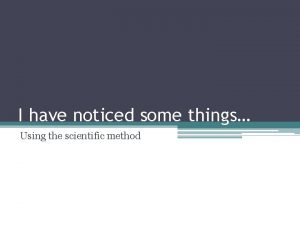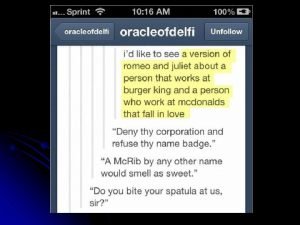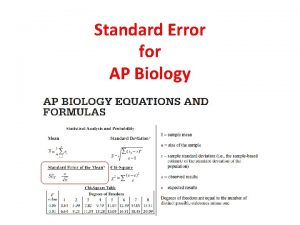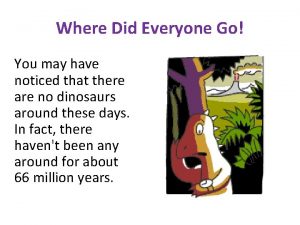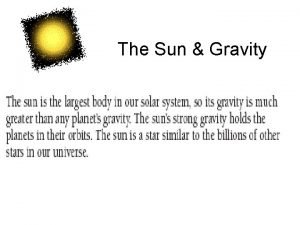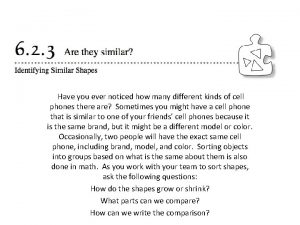As you may have noticed in Lesson 5







- Slides: 7

As you may have noticed in Lesson 5. 2. 3, considering probabilities with more than one event and more than two possibilities for each event (such as with the rock-paperscissors game) can make keeping track of all of outcomes a challenge. In this lesson, you will learn about probability tables, a new strategy for organizing all of the possibilities in a complicated game. probability tables - An area model or diagram is one way to represent the probabilities of the outcomes for a sequence of two events.

5 -54. TEN Os In this game, you will create a strategy to play a board game based on your predictions of likely outcomes. You will place ten O’s on a number line. Then your teacher will roll two number cubes and add the resulting numbers. As your teacher rolls the number cubes and calls out each sum, you will cross out an O over the number called. The goal of the game is to be the first person to cross out all ten of your O’s. Talk with your team about the possible outcomes of this game. Then draw a number line like the one below on your own paper. Place a total of ten O’s on your number line. Each O should be placed above a number. You should distribute them based on what results you think your teacher will get. More than one O can be placed above a number.

5 -55. Gerald’s strategy for the Ten O’s game was to place an O on each number from 1 to 10. He was frustrated that his strategy of placing his ten O’s was not working, so he decided to analyze the game. Gerald began by trying to create a table to list all of the possible combinations of rolls. He made the table at right. Did he list them all? If so, how can you be sure that they are all there? If not, give examples of a few that he has missed.

5 -56. Gerald decided that this method was taking too long, that it was too confusing, and that he made too many mistakes. Even if he listed all of the combinations correctly, he still had to find the sums and then find theoretical probabilities for each one. Inspired by multiplication tables, he decided to try to make sense of the problem by organizing the possibilities in a probability table like the one shown below:

5 -56 cont. a. How does Gerald’s table represent the two events in this situation? What should go in each of the empty cells? Discuss this with your team and then complete Gerald’s table on your own paper. b. How many total possible number combinations are there for rolling the two cubes? Is each combination listed equally likely? That is, is the probability of getting two 1’s the same as that of getting two 2’s or a 3 and a 1? c. How many ways are there to get each sum? Are there any numbers on the game board that are not possible to achieve? d. What is theoretical probability for getting each sum listed on the Ten O’s game board? e. Now work with your team to determine a better strategy for Gerald to place his ten O’s on the game board that you think will help him to win this game. Explain your strategy and your reasoning.

5 -58. Now go back and analyze the game of rock‑paperscissors using a probability table to determine the possible outcomes. a. Make a probability table and use it to find the probability of Player A’s winning and the probability of Player B’s winning. Did you get the same answers as before? b. Do the probabilities for Player A’s winning and Player B’s winning add up to 1 (or 100%)? If not, why not?

Practice 1. A 40 -passenger bus is carrying 20 girls, 16 boys, and 2 teachers on a field trip to the state capital. What is the ratio of boys to total passengers? 2. If a bag contains 7 clear marbles, 8 red marbles, and 5 blue marbles what is the ratio of clear marbles to red marbles? 3. Molly’s favorite juice drink is made by mixing 3 cups of apple juice, 5 cups of cranberry juice, and 2 cups of ginger ale. What is the ratio of ginger ale to apple juice? 4. If Molly needs 25 cups of juice drink, how many cups of each liquid should be used? Remember that ratios must stay the same.

